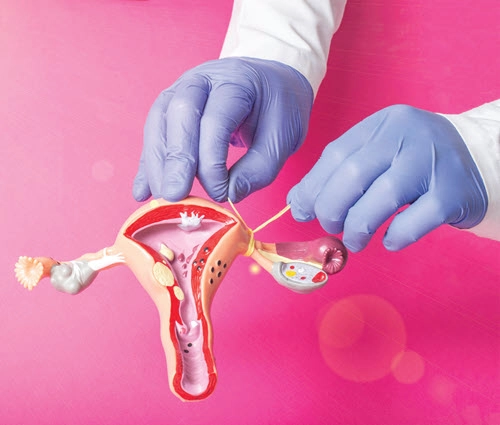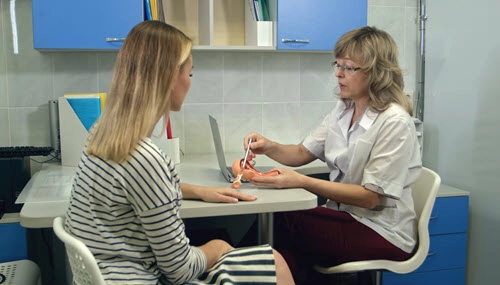Here’s the advice ACOG reversed as of June 2021.
Have a tubal ligation claim on your desk? That means you’ve got to determine which type of procedure to report. Your options are:
If you focus on the ob-gyn’s technique (laparoscope or hysteroscope versus open procedure), transection (device or fulguration) method, and delivery involvement, you can solve these claims easily.
Heads up: You’ll always report a tubal ligation with Z30.2 (Encounter for sterilization), no matter which type of tubal ligation the ob-gyn performs or the reason the patient (or patient’s legal guardian) requested the tubal, says Melanie Witt, RN, MA, an ob-gyn coding expert based in Guadalupita, New Mexico.

Tip 1: Highlight 2 Choices for Ligation by Laparoscope
If your ob-gyn uses a laparoscope, you will report either 58670 (Laparoscopy, surgical; with fulguration of oviducts [with or without transection]) if the tube is destroyed using electrocautery or laser or is cut in two and 58671 (... with occlusion of oviducts by device [eg, band, clip, or Falope ring]) if a device occludes the tube.
Look out: If an ob-gyn performs a “mini laparoscopic tubal,” you will look to these two codes as well, Witt points out — but look at the technique to determine which code to use. These two codes differ based on technique regardless of whether the ob-gyn performs the ligation on its own or following a delivery.
Noteworthy: In July 2021, the American Congress of Obstetricians and Gynecologists (ACOG) changed their recommendation for a laparoscopic sterilization to include the statement that “ACOG has now determined that the evidence validates CPT® +58661 for the removal for the fallopian tubes for sterilization laparoscopically.” Therefore, ACOG is recommending that CPT® +58661 (Ligation or transection of fallopian tube(s) when done at the time of cesarean delivery or intra-abdominal surgery (not a separate procedure) (list separately in addition to code for primary procedure)) is the appropriate code to report when sterilization is accomplished by removal of the fallopian tubes, rather than by ligation or the use of clips.
In August 2016, they had indicated “When performing an elective sterilization laparoscopically, code 58670 (Laparoscopy, surgical; with fulguration of oviducts (with or without transection)) is appropriate to report.” They added, however, that if the tubes were being removed in addition to some other primary or laparoscopic gyn procedure that did not involve the adnexa, 58661 could be billed.
“I think payers may push back on billing +58661 for a sterilization procedure, because the relative value units [RVUs] are higher [+58661 has 19.38 when compared to 58600 with 11.05]. This will not be lost on payers,” Witt says. “You will still have to use the diagnosis of sterilization [Z30.2] if the primary reason for the surgery is sterilization. If, instead, the surgery is required for prophylactic removal of the tubes due to a patient history that has been documented in the medical record, you can report a diagnosis code of Z40.02 (Encounter for prophylactic removal of ovary) and/or Z40.09 (Encounter for prophylactic removal of other organ) instead. For completeness, you would want to add a secondary code for the patient history that led to this decision. If denied, you may have to show that the work involved was equivalent to that of a salpingectomy for disease.”
Tip 2: You Have 4 Options for Ligation by Open/Vaginal Approach
If your ob-gyn does not use a laparoscope and performs an open or vaginal procedure, you will report one of these four options:
Important tip: While ACOG revised their statement with regard to the laparoscopic approach, their 2016 opinion with regard to the open approach as not changed. Back in 2016, they stated, “Code 58700 (Salpingectomy, complete or partial, unilateral or bilateral [separate procedure]) should never be used to report a sterilization procedure of any sort. This code was valued to include pathological changes of the fallopian tubes that cause complications such as blocked tubes or adhesions.”
Tip 3: Ligation Following Vaginal Delivery? Use 58605
Answer 3: You can report the tubal ligations following a vaginal delivery (59400, 59409-59410). If the tubal ligation occurs immediately after the delivery (during the same hospitalization as the delivery), use 58605, says Jan Rasmussen, PCS, CPC, ACS-GI, ACS-OB, owner/consultant of Professional Coding Solutions in Holcombe, Wisconsin.
If the tubal ligation is performed at the same operative session as a vaginal delivery, you should append modifier 51 (Multiple Procedures).
Good news: Because the tubal ligation requires a separate incision and is essentially unrelated to the vaginal delivery, carriers that pay for the ligation under other circumstances will generally not take issue with reimbursement using this coding sequence.
However, If the tubal ligation occurs a day or more after the delivery (during the same hospital stay), use 58605 with modifier 79 (Unrelated procedure or service by the same physician or other qualified health care professional during the postoperative period). You should receive full reimbursement for the procedure.

Tip 4: Ligation Following C-Section? Check Out +58611
You’ll report +58611 for a ligation following a cesarean. Cesarean delivery frequently offers the ob-gyn the chance to perform tubal ligation immediately after the delivery, sparing the patient an additional surgical session.
Red flag: Billing for tubal ligation at the time of cesarean is almost always a problem with payers because they count the cesarean incision as the incision for the ligation, Witt says. To these insurers, the ligation at the same session does not represent significant effort for the ob-gyn.
Although ACOG specifically leaves tubal ligation off the list of bundled procedures in its policy on cesarean deliveries and global ob care with cesarean, some carriers will pay little or nothing extra for the procedure, Witt says.
Money saver: Tubal ligation performed at the time of cesarean delivery can prove a significant source of revenue, so practices should negotiate contract renewal to see that the procedure is reimbursed separately from the global package or cesarean delivery codes. “Also, you should point out to the payer that +58611 is an add-on procedure that does not take a modifier,” Witt says. The Resource-Based Relative Value Scale (RBRVS) valued this code based solely on the intraoperative work.
Tip 5: Zero in on 58565 For Essure Procedure
Answer 5: Your ob-gyn can also perform an Essure procedure, which involves implants into the fallopian tubes. For this procedure, you’ll use 58565 (Hysteroscopy, surgical; with bilateral fallopian tube cannulation to induce occlusion by placement of permanent implants).
Note: If the ob-gyn placed the device in only one tube (for instance, if the other tube was already blocked), you should add modifier 52 (Reduced services) to this code.
